Make This the Spring to Grow Heirloom Tomatoes!
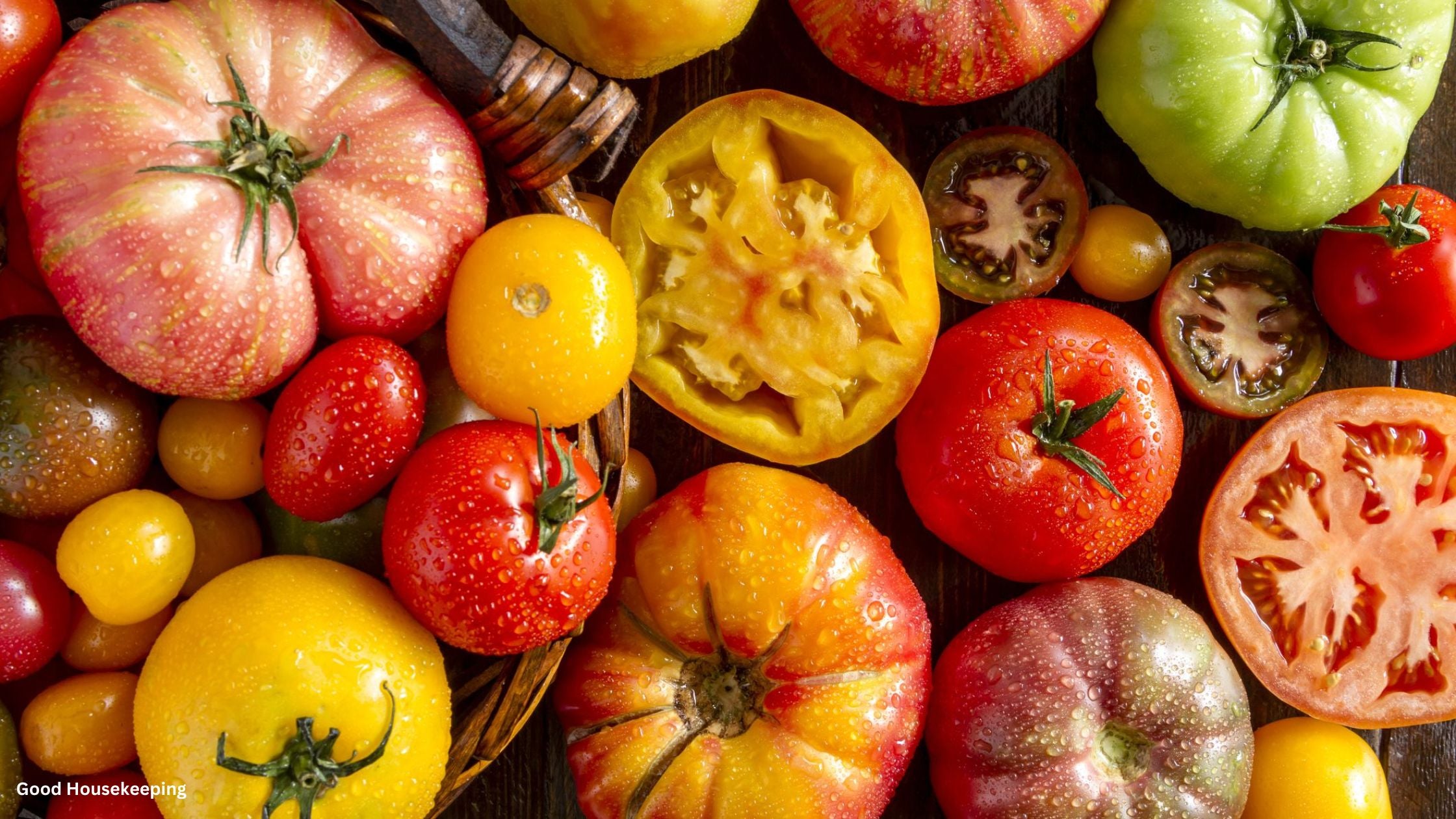
‘Even though February is the shortest month of the year, sometimes it seems like the longest.’ Lorraine Snelling
On one hand, truer words were never spoken. On the other, February can be exciting. Really! February is what you make it.
There are many positives about February. If you enjoy winter sports, love Valentine’s Day, bird watching and enjoy photography, it offers unending opportunities. Some people even enjoy outdoor winter camping/glamping and ice fishing. Later in the month, Family Day comes along and gives us a much needed long weekend. For gardeners February is full of promise. They know that out there somewhere are greenhouses (like Floral Acres) that are busy seeding their first 2024 crops of perennials, annuals, vegetables and herbs. It’s a time to cozy up by the fire and dream about and plan your spring 2024 garden.
Part of my February spring planning is deciding what varieties of tomatoes I am going to grow. One must consider many things; disease resistance, color, texture, slicing, paste, canning, size and most important – flavour.
It is fun though to search out those elusive perfect tomato varieties because in Saskatchewan there is nothing more sacred to the taste buds as that first bite of a fresh, home grown tomato.
This year I am choosing to grow heirloom tomatoes (Solanum lycopersicum). A heirloom tomato is defined as an open-pollinated variety that has been cultivated for at least 40 years. Some heirloom seeds have been passed down from generation to generation of gardening families. Open pollination is best described as pollination by natural means – by pollinators such as bees and hummingbirds and sometimes a gardener wielding a soft paintbrush! Tomatoes are also self-pollinating.
Heirloom tomatoes come in all sizes and shapes. Some are determinate and others are indeterminate. Determinate tomatoes grow to a certain height, flower and fruit. They usually do not need staking and do not need to be pruned. Indeterminate tomatoes keep growing and fruiting all season until the first hard frost. They are usually tall and need staking or caging. Once the plant matures and starts to produce flowers and fruit, remove the suckers that come out of the V between the branches and main stem. Remove any branches that are growing or hanging close to the ground. You can create multi-stemmed plants by not removing the sucker that occurs just below the first set of flowers and fruit.
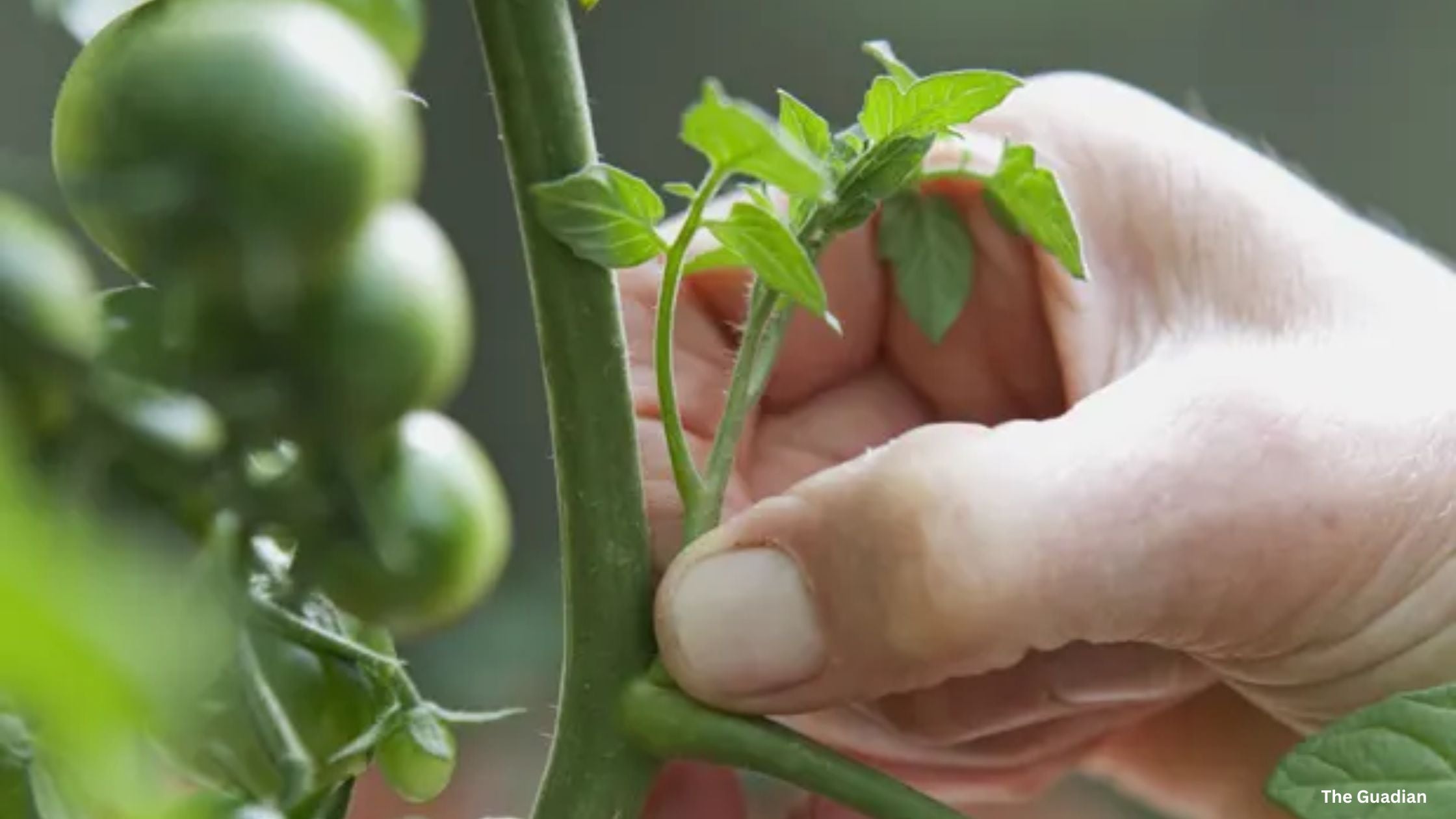
For those gardeners that are short on garden space, determinate heirlooms can be grown in 45 cm diameter pots and indeterminate in 60 cm diameter pots. Make sure the pots have good drainage.
The very best thing about heirloom tomatoes is their taste. Many hybrid tomatoes we find in stores today sacrifice taste for longer shelf life, disease resistance and the quest for a perfectly red, round tomato.
Most heirloom tomatoes have a unique skin color when ripe– burgundy, dark brick red, yellow/green, deep purple, yellow, green and golden orange. They also come in various sizes and shapes.
The fruit produces seed that remains true to the parent plant. In other words heirloom tomato seed can be saved and planted from year to year knowing the plants will come back true to the original parent plant. Heirloom seed can usually be stored up to 10 years.
Other information you should know about heirlooms!
They are lower yielding than modern hybrids. Then plant more!
High in Vitamin A, C, antioxidants, potassium and fibre.
Minimal disease resistance. Requiring a bit more observation and care but the result is worth it.
Many heirlooms are originally from Germany and Russia and can get by with a bit cooler growing temperatures.
Days to maturity from transplant (to the outdoors) may be longer than hybrid tomatoes.
Heirlooms can be thin skinned so some varieties are more prone to cracking and cat-facing (scarring on the bottom of the fruit.) This is mainly caused by overwatering.
For me this is way down on the list of ‘negatives’ but must be mentioned. Heirloom varieties do not produce the perfectly shaped tomato that we all have become accustom to finding in the grocery store.
Cultural Requirements of Heirloom Tomatoes
Full sun.
Like any tomato, heirlooms like a rich, slightly acidic soil. Add some compost and peat to your growing area in spring. You not only want a nutritive soil but an aerated soil is also very important.
Water at ground level in the morning. Overhead watering will spread any lurking diseases. Do keep the soil consistently moist. This can be best accomplished by using driplines. Mulch – once the soil has warmed up in the spring and you’ve planted your tomatoes apply a 2 inch layer of mulch around each one. Do not mulch too close to the stems. Good mulches include compost, tree leaves saved from last fall and grass clippings. Do not use grass clippings from a lawn that has been treated with pesticides and herbicides.
Fertilize with a tomato or vegetable fertilizer; water soluble or slow release. Make sure the first number (nitrogen) is not too high. Follow the application rates on the labels.
Provide good air circulation to prevent foliar diseases.
Keep your pruning tools clean (Lysol or an alcohol -water mix.)
Inspect leaves often for signs of disease.
Space plants to allow for good air circulation.
I’ve chosen to highlight some great tasting Heirloom tomato varieties/cultivars. Enjoy trying them out in your garden!
Cherokee Purple
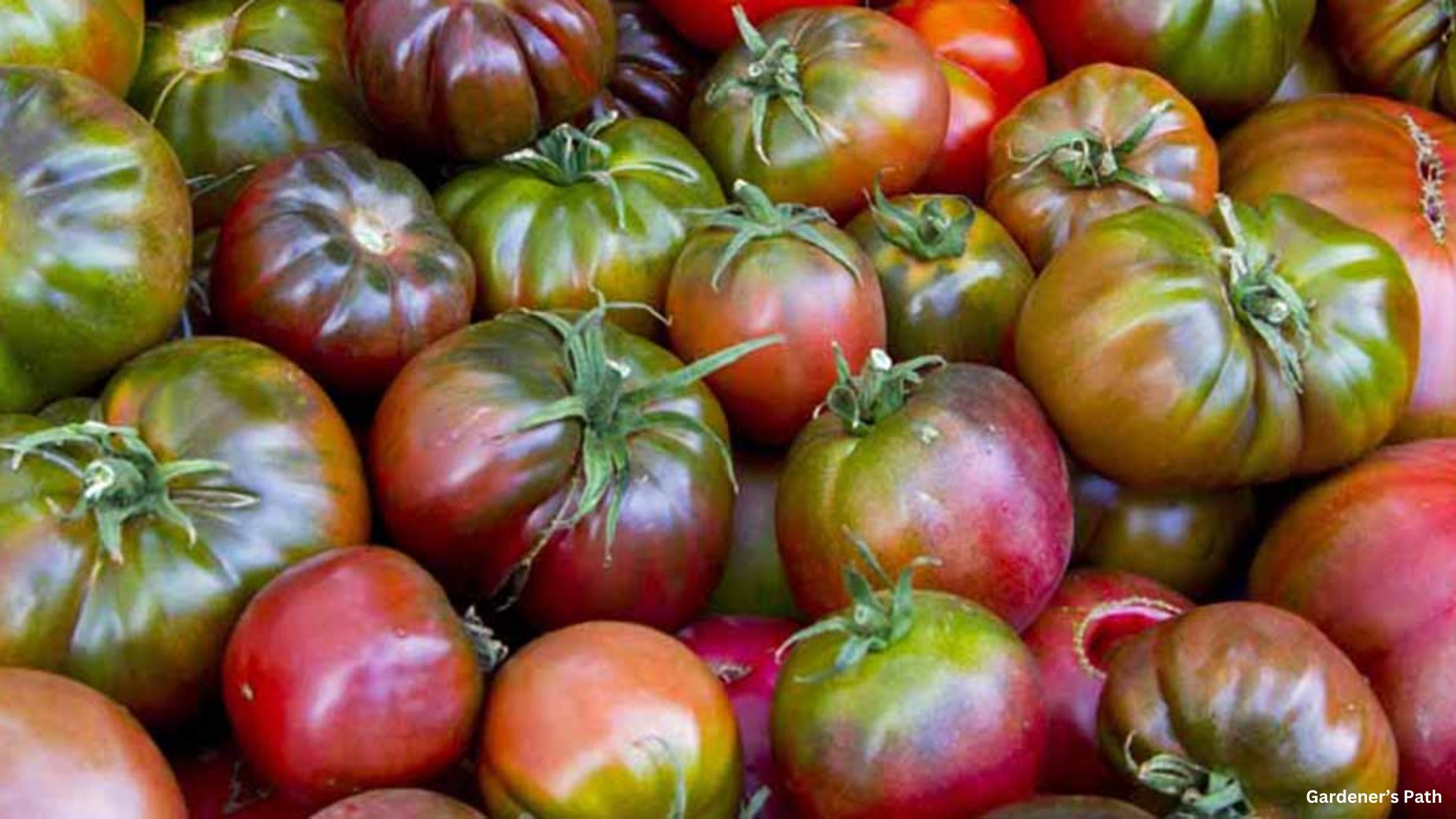
Cherokee Purple is a beefsteak heirloom so makes a wonderful slicing fruit. Indeterminate. It has a very sweet flavor with tangy, smoky undertones. When ripe, the skin is a crimson purple. The interior is purple/brown. 72 days to maturity from transplant. This tomato can grow 2-3 m and fruits from mid-summer to the first hard frost.
Black Cherry
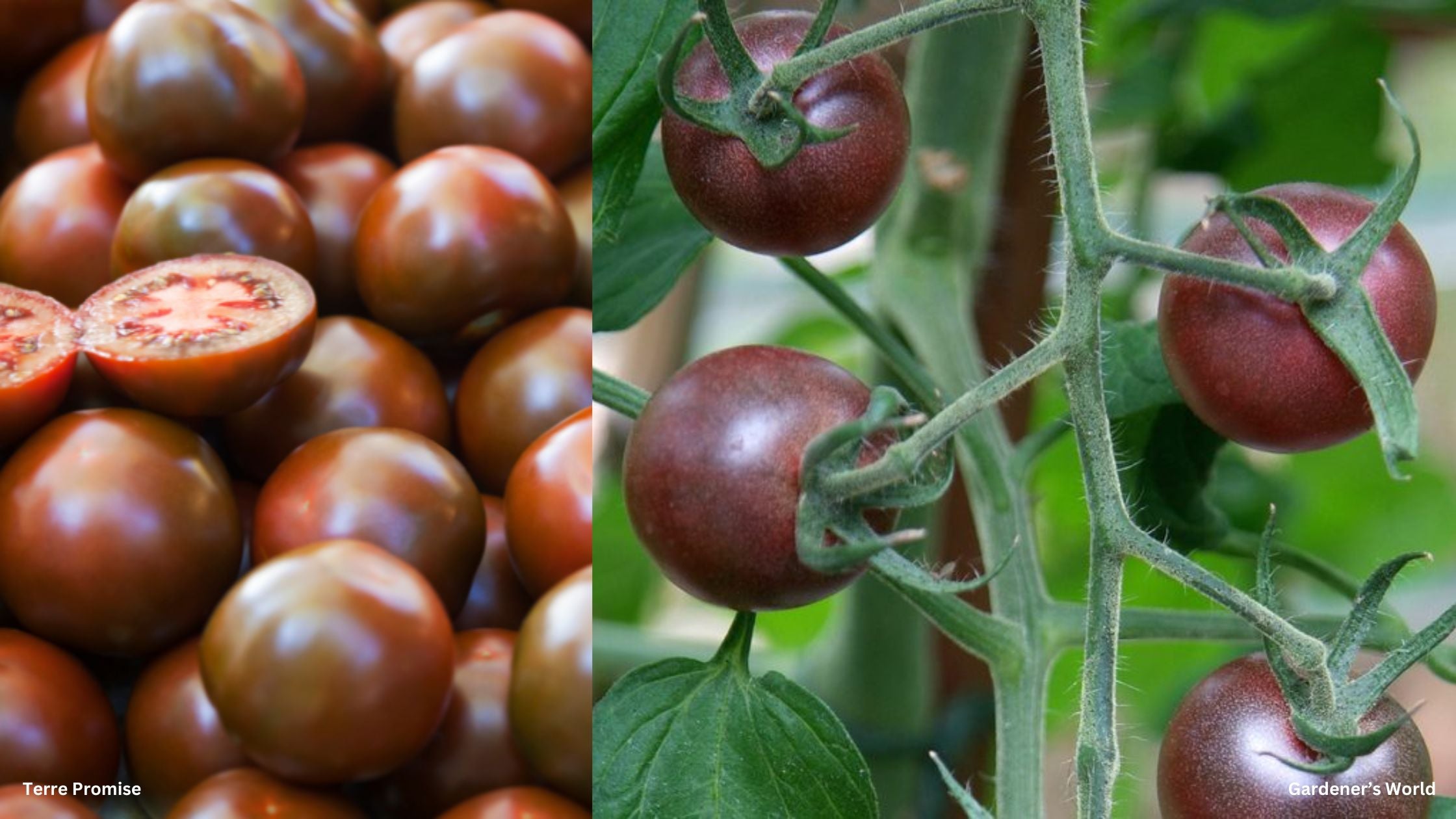
Black Cherry – An indeterminate cherry tomato with a delicious, sweet, rich, and full tomato flavor. When ripe, this heirloom is 2.5 cm with a deep purple mahogany brown skin. Can be grown in a container. Plant size is 1.5 m x 1.22 m. 64 days to maturity from transplant. An actual disease resistant heirloom tomato.
Brandywine

Brandywine - An indeterminate beefsteak. 75 - 80 days to maturity from transplant. Brandywines comes in many different colors. The yellow is the most productive and the red is the most flavorful. They all have a variation of an exotic sweet flavor with spicy undertones. Brandywines produce large fruit that will vary in weight with the variety planted. They are low in acidity, juicy and firm. The mature size of the plants range anywhere from 1m – 3m (again dependent on the variety/cultivar).
Carbon – 80 days to maturity from transplant. Indeterminate. This plant will grow 2-3 m in height. A very dark, black tomato with a rich flavor and meaty texture. Fruit weight: 283 to 396 grams.
Highly productive over a long period of time.
Resists cracking and cat facing. Great for salads and sandwiches.
Mr. Stripey
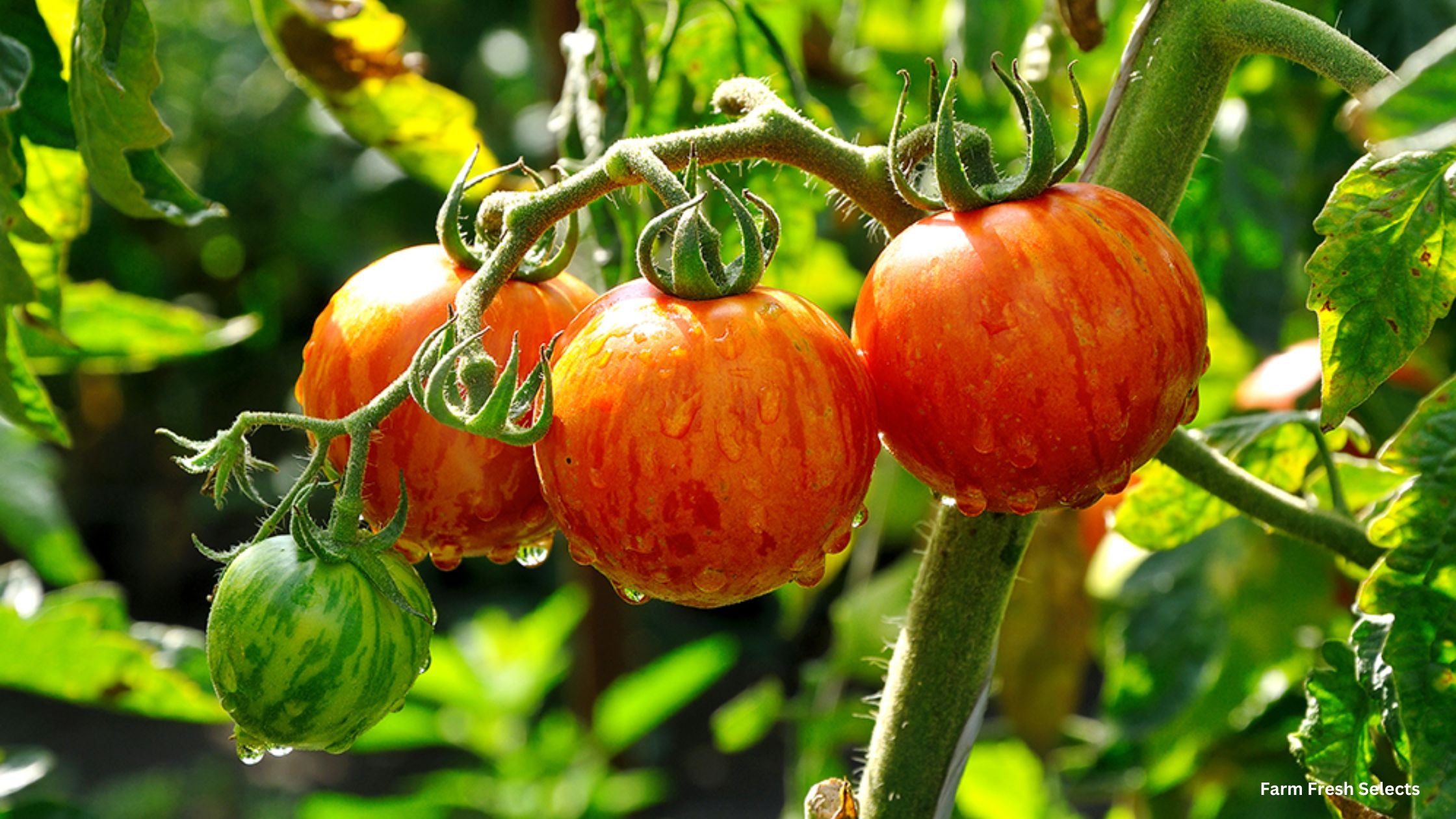
Mr. Stripey – Indeterminate. 80 days to maturity from transplant. Maximum height of 2½ m with a 1 m spread. Mr. Stripy is a low acid heirloom with small leaves and a skin color that is a mix of red and yellow. The red and yellow also blend into the meat of the fruit. The flesh of the fruit is low acid, soft, juicy and tastes very sweet.
Aunt Ruby’s German Green – Is a beefsteak cultivar that takes 80 days to reach maturity from transplant. Indeterminate. Large flattened, round fruit with a delicious sweet, fruity, spicy flavor. Green skin when ripe with some yellow and pink blushing. Bushy strong plants. 225 – 300 gram fruit. Fruits ripen successively over many days. Aunt Ruby’s will reach a height of 2 m. Provide a large, strong tomato cage.
Mortgage Lifter
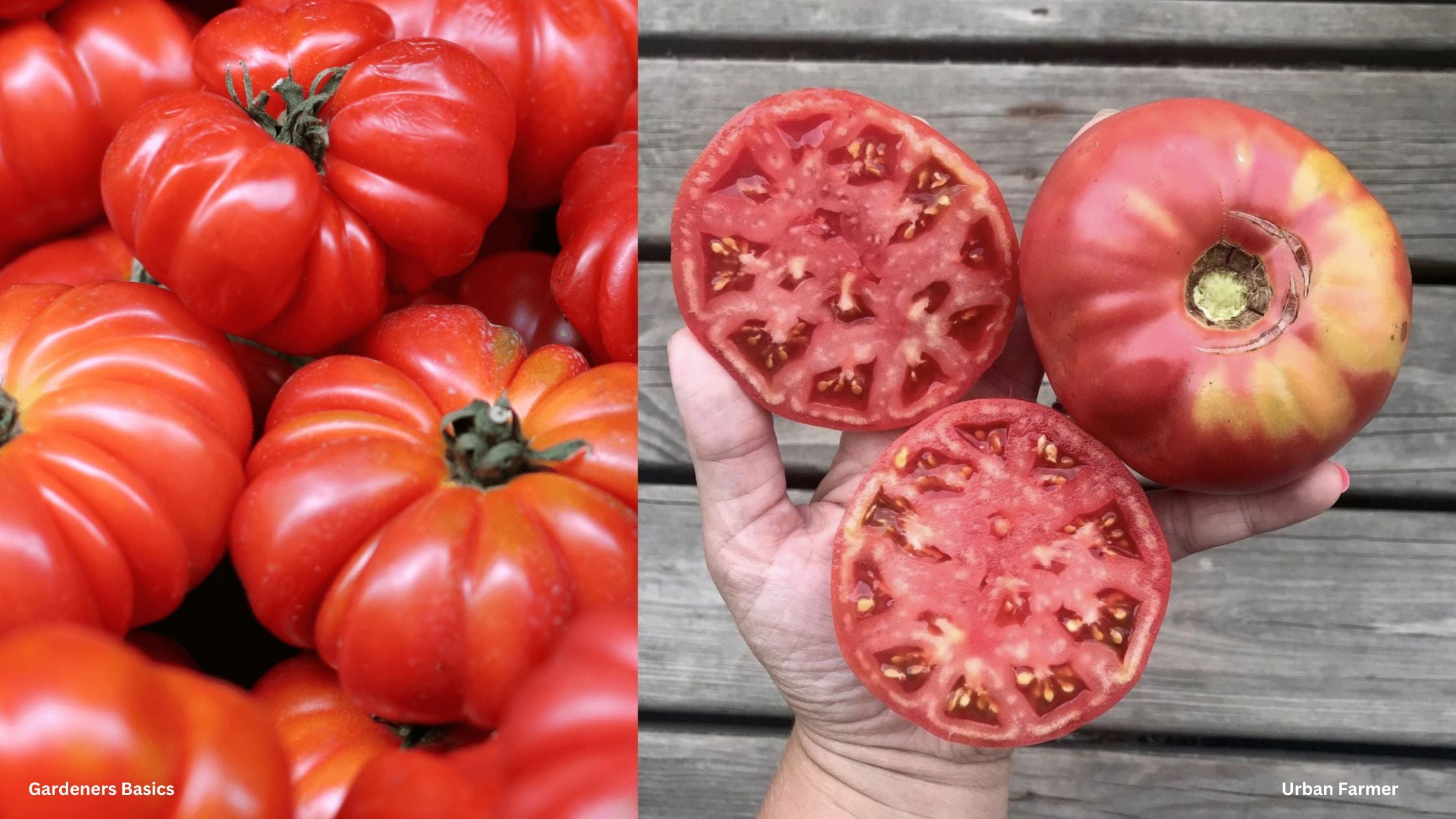
Mortgage Lifter – A very large indeterminate beefsteak tomato that has been grown since the 1930s. In ideal growing conditions the fruit can weigh up to 1.8 kg! The plant grows very tall sometimes topping out at 3 m. Provide a very strong trellis or cage. When ripe the tomato has a pinkish red skin with the flesh also being pinky red, meaty, low in acid and produces very few seeds. The taste is sweet and delicious.
Things You May Want to Know
Tomato leaves, roots and stems are toxic to cats, dogs, horses, pet birds and mildly toxic to humans.
I encourage you to Google ‘Heirloom Tomatoes’ if you are thinking of growing a few. Our article is just the tip of the iceberg regarding a wealth of information on all aspects of growing and harvesting seed from these incredibly tasty fruits.
